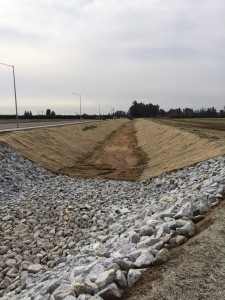Many best management practices (BMPs) have evolved to ensure environmentally sensitive projects remain in compliance with all applicable regulatory requirements.
Because they are well proven, these practices and techniques are widely recognized by both regulators and private interests as being effective for their intended purpose.
 For example, protecting stormwater quality by preventing erosion on your project, or placing an orange fence 20 feet around an elderberry shrub on your project that you plan to leave in place.
For example, protecting stormwater quality by preventing erosion on your project, or placing an orange fence 20 feet around an elderberry shrub on your project that you plan to leave in place.
The water quality in California’s San Joaquin Valley presents a particularly difficult challenge. Beyond the very real problem of insufficient supply for everyone’s needs, water pollution threatens to further diminish availability.
In response, many BMPs specific to water quality have arisen. Some apply to industrial wastewater, which can be produced by manufacturing, agribusiness or other activities involving processing, fabricating, or handling a broad spectrum of materials.
Others apply to construction and developments where historical drainage patterns are changed and soils previously vegetated are exposed to potential erosion. Then there are those relating to municipal sewage, which must be properly processed and contained.
At the opposite end from human activity there is the need to reclaim water to the ground table, and accommodate the millions of migrating birds that travel the Pacific flyway and stop to feed and rest in the Valley’s wetlands.
Stormwater is a good example to touch upon specific BMPs. When a stormwater plan is created it will typically include many aspects. These BMPs may include straw waddle, silt fences, street sweeping, retention ponds, erosion control blanketing, concrete washouts, drain inlet protection, hydroseeding, water trucks, mulching as well as many other proven techniques.
BMPs must be site-specific. No project drains the same, has the same soils, the same surrounding receiving waters, or the same potential for impact. Each project must be considered in its specific context … there is no BMP manual that will provide all the answers.
It is crucial that the project be inspected by a trusted professional who is willing to do the extra legwork to plan and draw measurements needed for your specific site. Unfortunately, there are a lot of consultants using Google Earth and not walking your site. We get our boots dirty and this saves our clients thousands of dollars.
We are experts in the use of BMPs, especially in the Valley.
Give us a call and we can give you an idea of the best management practices that make sense for your project.
Adequate protection without budget overkill is our goal for you.

